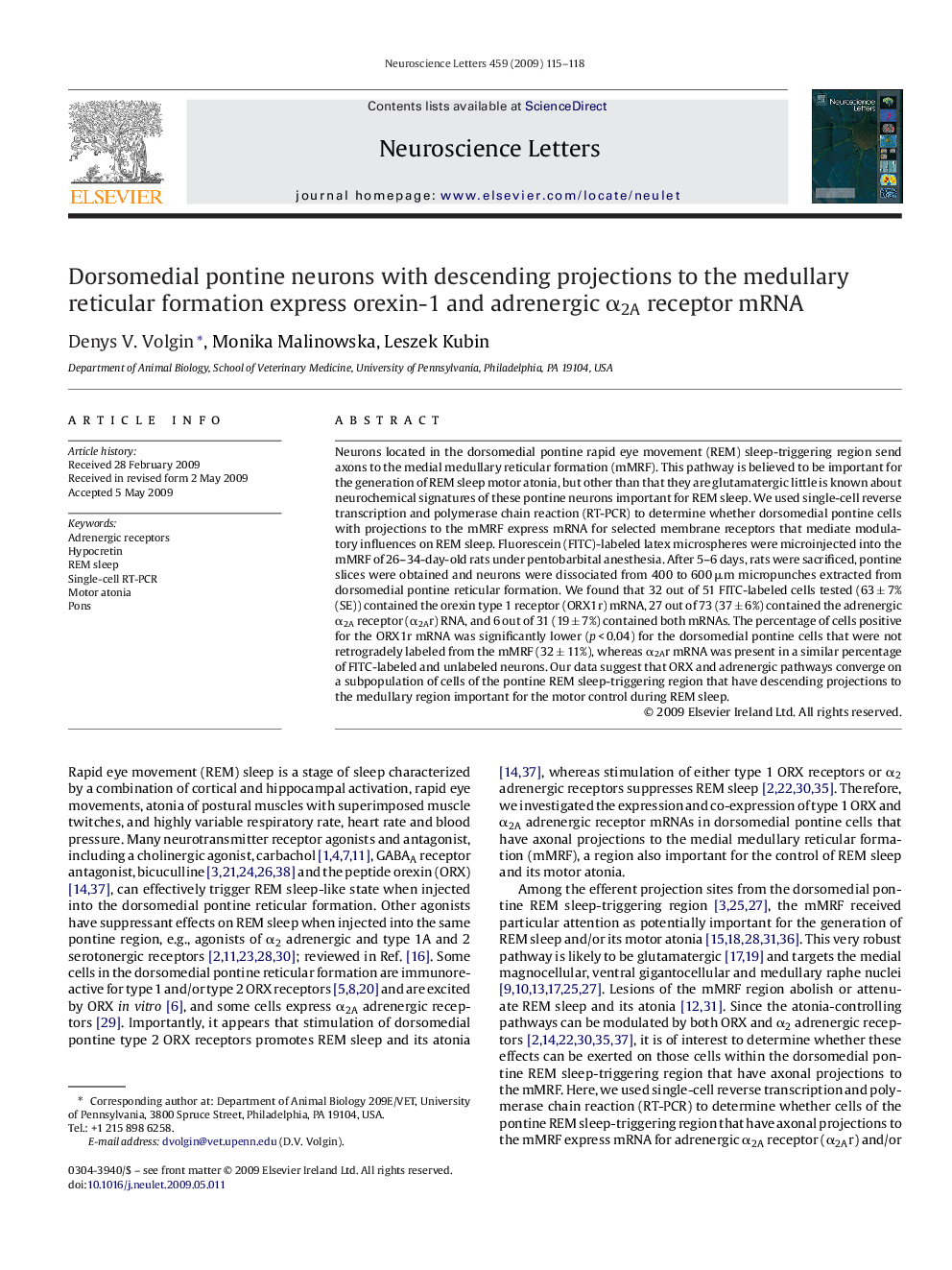| Article ID | Journal | Published Year | Pages | File Type |
|---|---|---|---|---|
| 4347399 | Neuroscience Letters | 2009 | 4 Pages |
Neurons located in the dorsomedial pontine rapid eye movement (REM) sleep-triggering region send axons to the medial medullary reticular formation (mMRF). This pathway is believed to be important for the generation of REM sleep motor atonia, but other than that they are glutamatergic little is known about neurochemical signatures of these pontine neurons important for REM sleep. We used single-cell reverse transcription and polymerase chain reaction (RT-PCR) to determine whether dorsomedial pontine cells with projections to the mMRF express mRNA for selected membrane receptors that mediate modulatory influences on REM sleep. Fluorescein (FITC)-labeled latex microspheres were microinjected into the mMRF of 26–34-day-old rats under pentobarbital anesthesia. After 5–6 days, rats were sacrificed, pontine slices were obtained and neurons were dissociated from 400 to 600 μm micropunches extracted from dorsomedial pontine reticular formation. We found that 32 out of 51 FITC-labeled cells tested (63 ± 7% (SE)) contained the orexin type 1 receptor (ORX1r) mRNA, 27 out of 73 (37 ± 6%) contained the adrenergic α2A receptor (α2Ar) RNA, and 6 out of 31 (19 ± 7%) contained both mRNAs. The percentage of cells positive for the ORX1r mRNA was significantly lower (p < 0.04) for the dorsomedial pontine cells that were not retrogradely labeled from the mMRF (32 ± 11%), whereas α2Ar mRNA was present in a similar percentage of FITC-labeled and unlabeled neurons. Our data suggest that ORX and adrenergic pathways converge on a subpopulation of cells of the pontine REM sleep-triggering region that have descending projections to the medullary region important for the motor control during REM sleep.
